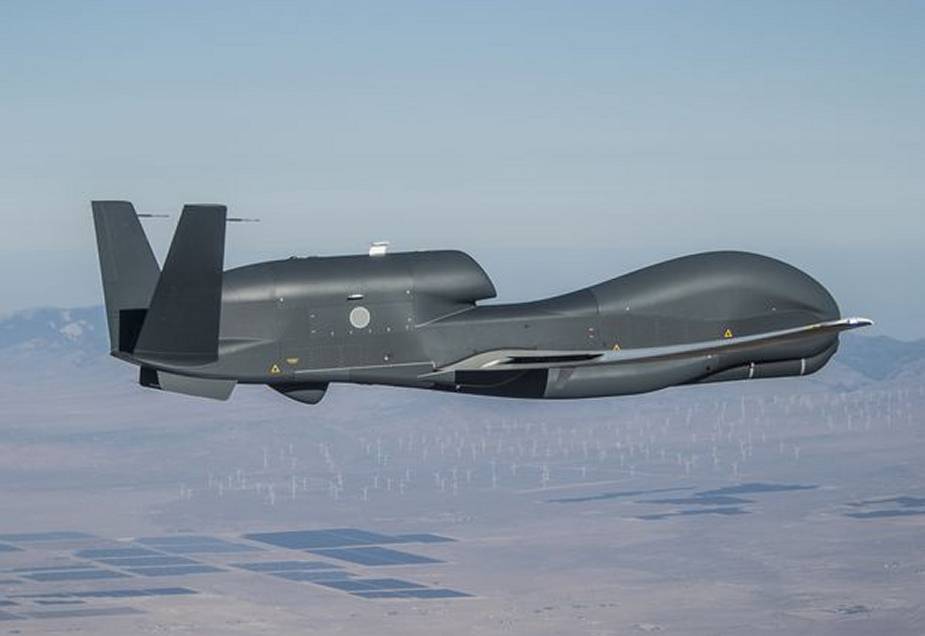Breaking news
Northrop Grumman completes first flight of Japanese second RQ-4B Global Hawk UAS.
On the heels of the successful first flight of Japan’s RQ-4B Global Hawk in early April 2021, Northrop Grumman recently completed additional successful flights for the second unmanned air vehicle (UAV) for Japan. Global Hawk is the only high-altitude, long-endurance UAV to deliver near-real-time on-demand data around the clock.
Follow Air Recognition on Google News at this link
 Japanese RQ-4 Global Hawk unmanned aircraft system (UAS) (Picture source: Northrop Grumman)
Japanese RQ-4 Global Hawk unmanned aircraft system (UAS) (Picture source: Northrop Grumman)
The RQ-4 Global Hawk unmanned aircraft system (UAS) is the premier provider of persistent intelligence, surveillance and reconnaissance information. Able to fly at high altitudes for greater than 30 hours, Global Hawk is designed to gather near-real-time, high-resolution imagery of large areas of land in all types of weather – day or night. Beyond intelligence collection, a portion of the Global Hawk fleet is engaged in supporting air and ground users with communications relay support. The EQ-4B Global Hawk carries the Battlefield Airborne Communications Node (BACN) payload providing life-saving support to warfighters.
Global Hawk has amassed more than 250,000 flight hours with missions flown in support of military operations in Iraq, Afghanistan, North Africa, and the greater Asia-Pacific region. The system provides an affordable and flexible platform for multiple sensor payloads to be used together, delivering mission-critical information to various users around the world.
In active operation with the U.S. Air Force since 2001, Global Hawk sees potential threats to allow commanders to gain greater understanding of an area of interest. These same intelligence-gathering capabilities also allow civil authorities greater ability to respond to natural disasters, conduct search-and-rescue operations and gather weather and atmospheric data to help forecasters predict the paths of storms.



















